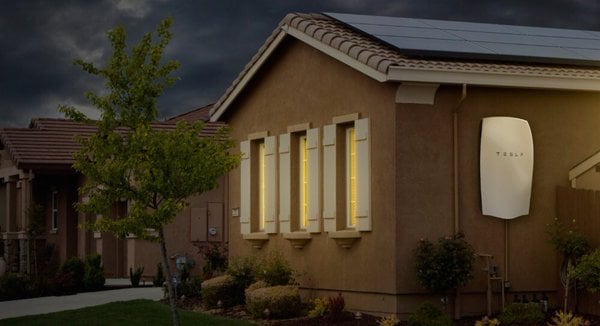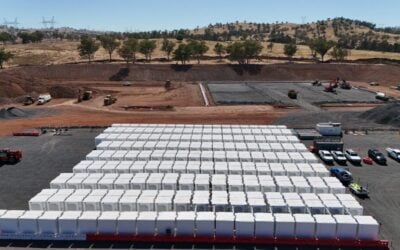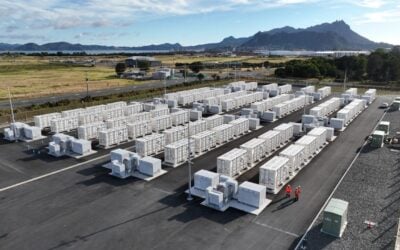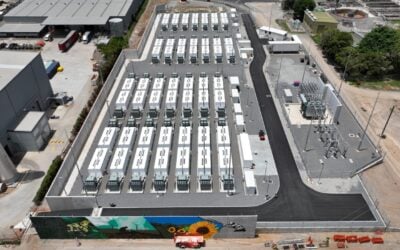
Stakeholders have two months to comment on guidelines for safely installing lithium-ion energy storage in Australian homes being drafted by Standards Australia, which have already proved controversial.
Standards Australia is a non-government, non-profit organisation which develops standards for consumer goods and services in Australia. Reports earlier this year had hinted that guidelines it was drafting – which are not mandatory unless later brought into legislation by national or local governments – could effectively put a stop to the installation of lithium-ion batteries in homes. Australia’s Clean Energy Council had advised against the introduction of “over zealous” safety rules that could jeopardise progress in the industry.
It was thought that Standards Australia was likely to recommend that home energy storage batteries be installed in separate enclosures, and away from homes, measures which the industry thought could add costs and complications to installation. However, the organisation refuted that claim.
“Contrary to recent speculation, Standards Australia is not developing standards that will ban the introduction of on-site lithium-ion battery storage in Australian homes,” it said in a hastily put out press release in February.
Try Premium for just $1
- Full premium access for the first month at only $1
- Converts to an annual rate after 30 days unless cancelled
- Cancel anytime during the trial period
Premium Benefits
- Expert industry analysis and interviews
- Digital access to PV Tech Power journal
- Exclusive event discounts
Or get the full Premium subscription right away
Or continue reading this article for free
However, Standards Australia’s latest press release issued two days ago acknowledged the controversy over the draft standards’ development. It said industry and government experts had worked closely together to put together the latest document.
The draft standards, in considering the risk of “self-sustaining fires” therefore call for “certain battery systems” to be excluded from installation in homes in Australia and New Zealand. These selected systems will have to be installed externally and adjoined to domestic homes, as long as they adhere to other fire regulations, in order to comply with the standard, “AS/NZS 5139:2017 Electrical installations – safety of battery systems for use with power conversion equipment”.
“These provisions have been included to try to safeguard against hazards during potential failure modes of a storage system, in the absence of available product standards,” the body wrote adding that the benefits of the emergent technology need to be “balanced with community safety expectations”.
There had also been a move by the territory of Queensland’s workplace regulator, the Electrical Safety Office (ESO), in March to recommend all home energy storage battery units should be installed separately from households in an external enclosure. ESO however revoked this guidance shortly after.
No international standards
The draft standards are intended to complement the February publication of Standards Australia’s “Roadmap for energy storage standards”.
The roadmap highlights the “important role for standards in supporting economic growth and allowing innovations such as storage systems to flourish,” Standards Australia CEO Dr Bronwyn Evans wrote in its foreword, before going on to acknowledge the critical role energy storage is likely to play in Australia’s national infrastructure going forward.
Standards Australia pointed out this week that internationally recognised standards for safety do not exist for energy storage technologies, hence the development of its own framework for Australia and New Zealand. As long ago as 2015, the country’s science agency, Commonwealth Scientific and Industrial Research Organisation (CSIRO) said improving knowledge of safety hazards and renovating standards would be essential to the storage industry’s integrity and future growth.
The draft was prepared by Standards Australia’s technical committee EL-042 Renewable Energy Power Supply Systems and Equipment. From here, the public comment period remains open for nine weeks, until 15 August 2017. Standards Australia committed to considering each comment in detail and putting them forward for resolution by the technical committee. If revisions are made to the draft, these will be written into a new draft and put to another period of public comment. Once this revision process has been undergone, the technical committee will then decide whether the full standards document warrants publication.
Australia’s energy storage market is considered one of the most advanced in the world, particularly for the enabling of solar PV self-consumption at household level. Last Friday national chief scientist Alan Finkel published his eponymous review of Australian energy security, which predicted growing uptake of renewables and energy storage and recommended that post-2020, energy storage (or pairing with dispatchability of thermal generation) should be mandatory for renewables projects.
Access Standards Australia’s public comment portal to have your say here.





